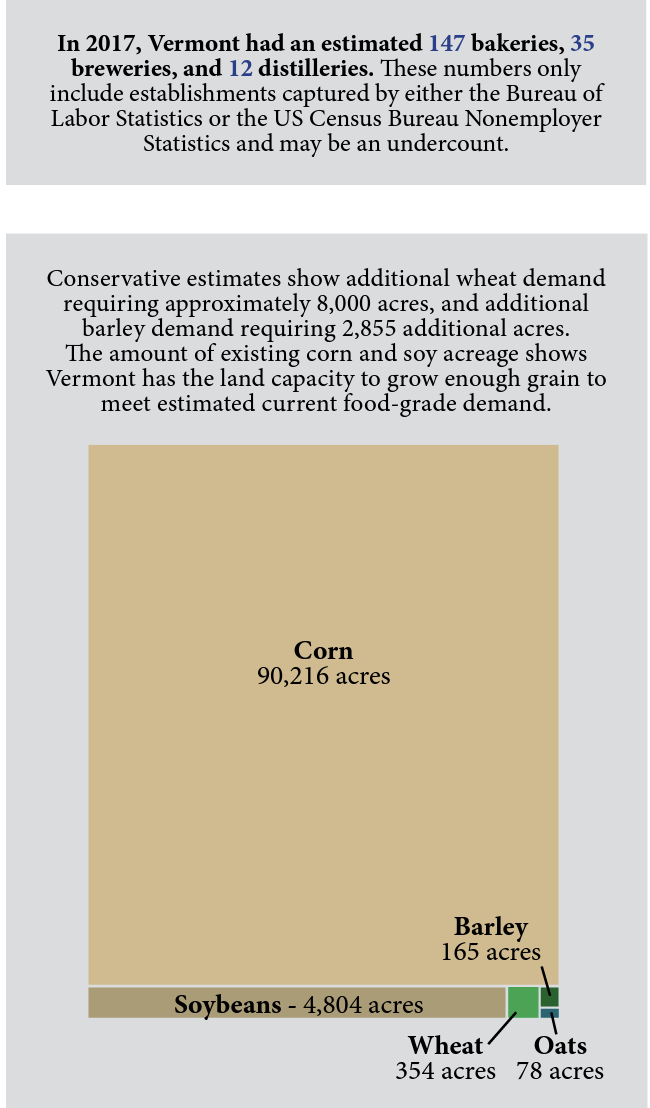

Consumers are concerned about where their food comes from, yet may not realize that the majority of local grain-based products (e.g., flour, bread, baked goods, beer, and spirits) are not made with locally grown grains. Local grains market opportunities are beyond direct-to-consumer, as brewers, maltsters, bakers, restaurant owners, food distributors, and others have all demonstrated interest in greater local product availability. For Vermont dairy farmers looking to diversify, growing grains is a feasible option because grains can be grown at scale, would benefit the forage rotation, are suitable for our soils and climate, and offer a diversified income stream. For farms to continue to, or transition to, growing edible grain, there needs to be additional equipment and infrastructure in Vermont for growing and processing, strong regional markets, access to capital, and research-based technical assistance.
Vermont was a national hub for grain production in the 1800s, but today, much of the grain and foods containing grains are imported into our state. This represents a missed opportunity for Vermont farmers and the numerous related businesses that could benefit from a local grains economy. Consumers are demanding goods that are grown or produced locally. Beer, bread, and spirits are all rapidly expanding Vermont products and markets requiring grain for production (see Bread brief, Beer brief, Spirits brief). Vermont brewers and distillers use an estimated 31 million pounds of grains each year with less than 5% of that grain coming from local or regional growers. Peterson’s Quality Malt in Charlotte is providing brewers with a new malt made from local and regionally sourced grains, and estimates the demand will increase to 8,000 acres by 2023.
Similarly, the number of bakeries in Vermont and surrounding states presents a significant opportunity for local flour production. However, Vermont lacks processing infrastructure to turn raw product into a flour, severely limiting opportunities for farmers and end users.
In order for the Vermont grain economy to grow, infrastructure is required for growers to harvest, dry, store, aggregate, mill, and process their harvested grains. At this time, such infrastructure does not exist in our state on a scale that is necessary to meet in-state demand, let alone sell into out-of-state markets.
